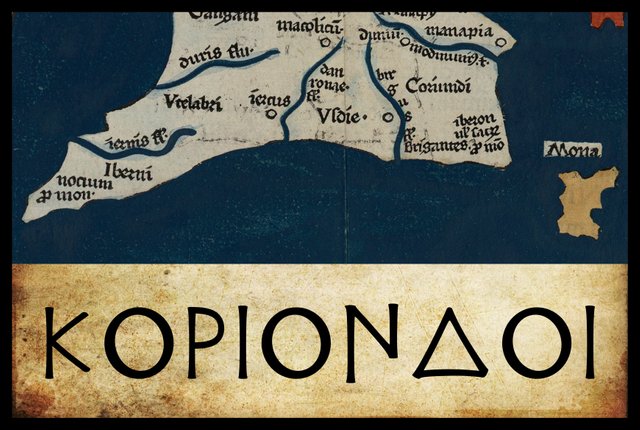
In his description of Ireland, Geography 2:2 §§ 1-10, Claudius Ptolemy records the disposition of sixteen native tribes. Beginning, as before, in the southeast corner of the island and proceeding in a counterclockwise direction, the second of these are the Koriondoi. These people are described as lying to the south of the Manapioi, who are located on the east coast, and to the north of the Brigantes, who are located in the southeastern corner of the island.
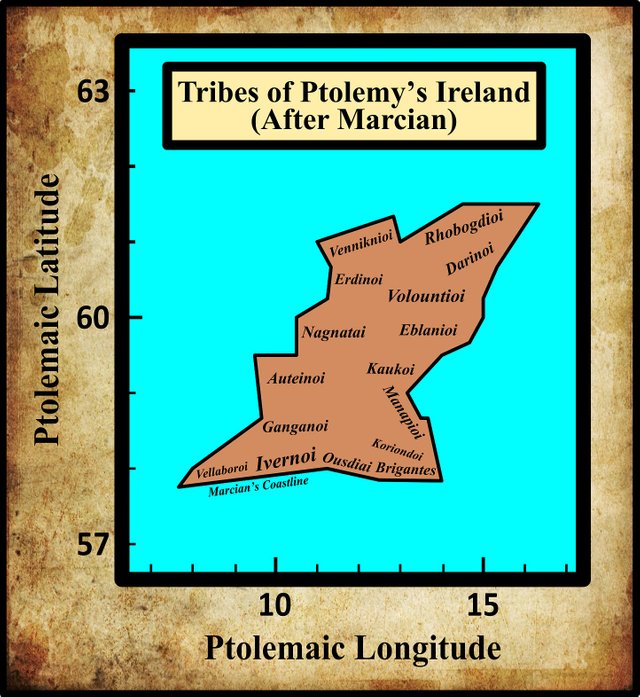
Variants
In his 1883 edition of Ptolemy’s Geography, Karl Müller notes two variant readings of this tribal name:
| Source | Greek | English |
|---|---|---|
| X, S, Ω, Σ, Φ, Ψ, Arg | Κοριονδοι | Koriondoi |
| D | Καριονδαι | Kariondai |
| Other MS | Κοριονδαι | Koriondai |
X is Vaticanus Graecus 191, which dates from about 1296. It is believed that this manuscript preserves a very ancient tradition. Ptolemy’s description of Ireland is on folia 138v–139r.
S is Mediolanensis D, 527, a manuscript currently housed in the Ambrosian Library in Milan, Italy.
Ω, Σ, Φ and Ψ are four manuscripts from the Laurentian Library in Florence: **Florentinus Laurentianus 28, 49 : Florentinus Laurentianus 28, 9 : Florentinus Laurentianus 28, 38 : Florentinus Laurentianus 28, 42.
Arg is the Editio Argentinensis, which we have met several times before. It was based on Jacopo d’Angelo’s Latin translation of Ptolemy (1406) and the work of Pico della Mirandola. Many other hands worked on it—Martin Waldseemüller, Matthias Ringmann, Jacob Eszler and Georg Übel—before it was finally published by Johann Schott in Straßburg in 1513. Argentinensis refers to Straßburg’s ancient Celtic name of Argentorate.
D is one of the Codices Parisini Graeci in the Bibliothèque nationale de France in Paris (Grec 1402).
It is curious that Nobbe, Müller, and Wilberg all chose Κοριονδοι [Koriondoi] as the correct form of the name, even though it is represented in only six Italian manuscripts and a printed edition of the 15th and 16th centuries. It is also strange that Müller does not include X (Vaticanus Graecus 191) among these manuscripts: it clearly gives the form Κοριονδοι:
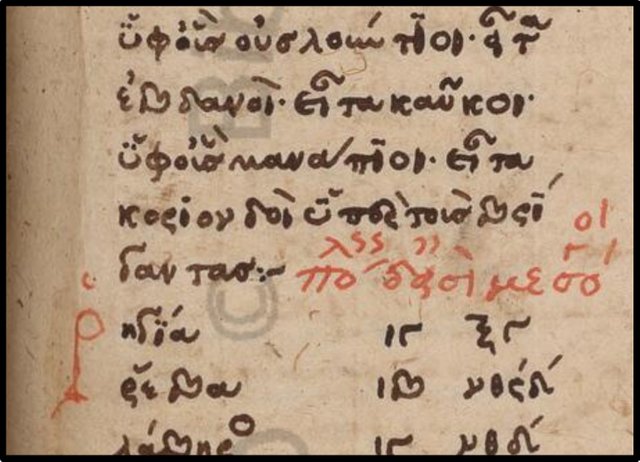
In the preceding article in this series, we saw that Müller also failed to include the form Βριγαντας [Brigantas] among the variant readings of Βριγαντες [Brigantes], even though it is the form used in Vat Gr 191, as can be clearly seen in the above image. Müller lists Vat Gr 191 among the sources he consulted, designating it with the siglum X. Perhaps Κοριονδοι occurs in the majority of the MSS after all, while Müller only notes a handful of them.
Koriondoi
Although Ptolemy clearly places the Koriondoi on the east coast of Ireland, in what is now County Wexford, several of the early antiquaries seem to have believed that they were in fact located much further to the west, in the province of Munster. William Camden writes that:
South Munster [ie Desmond] was [the country] of the Oudiæ or Vodiæ and the Coriondi; but at present it is distinguish’d into five counties, viz. Kerry, Cork, Limerick, Tiperary and Waterford. (Camden 1333-1334)
Similarly, James Ware writes:
Coriondi and Udiæ, Vodii, or a People so called. they antiently were planted in the Countries now called the Counties of Cork, Tipperary and Limerick. Cork, (Corcagia) a city of the Coriondi, seems to discover itself in the Name Coriondi. Whether these Coriondi were a Colony from the Coritani of Britain is very doubtful; and yet in Truth their Names are not much unlike. (Ware & Harris 38)
That Cork (Irish: Corcaigh) takes its name from the marshy (Irish: corcach) land on which it stands is now considered beyond dispute. It originated as a monastic settlement of the 6th century CE. It cannot possibly have anything to do with Ptolemy’s Koriondoi. As for the Coritani, these are a British tribe mentioned in Ptolemy’s Geography of Britain. He places them in what are now the modern counties of Leicestershire, Nottinghamshire, Lincolnshire and part of South Yorkshire. Modern scholarship, however, believes that the correct form of their name is Corieltauvi. If this is correct, then there can be no connection between them and the Koriondoi of Ireland.
William Beauford, writing in 1789, corrects these errors and offers an explanation for them:
[The Koriondoi] are thought by Ware to be the ancient inhabitants of the counties of Cork, Limerick and Tipperary, but Ptolemy is speaking of the eastern coasts, not the southern or midland parts. But what led Ware into this mistake was probably reading Ptolemy: After the Coriondii above the Brigantes are the inland cities, instead of, Afterwards the Coriondii above the Brigantes. The inland cities are. (Beauford 69)
Beauford goes on to add:
They were most probably the Carimandii of Ibh German, a maritime district near Wexford. They were also denominated Maritimi and Moragh, and were probably Britons, for the mountains on the west of the county are denominated in Irish Sliabh Breaghnach or British mountains to this day. (Beauford 69)
In suggesting a British origin for the Koriondoi, Beauford may well be on the right track, though the rest of his analysis is of no value. I have not been able to identify the Carimandii or Ibh German. His subsequent speculations that the Koriondoi may have been of Germanic origin are also of little value:
The Irish called this county, and also all the south of Leinster, Lagean, and the inhabitants Ligmanii, who are said also to be Heremonii and Gallians or Goillens. They might therefore not improbably be of Germanic origin, as the Lygii or Lygmanii were a tribe of the Hermionii or Gyllen in Germany. (Book of Lecan, Keating, O Connor, Pliny, Tacitus, Cluverius, &c.) (Beauford 69)
Karl Müller was perhaps the first to suggest a link between Ptolemy’s Koriondoi and a little-known tribe in Roman Britain:
[The Koriondoi] are placed at Carnsore Point. A certain Corionototae are recorded in the Inscriptiones Britanniae (Number 481), in the edition by Hübner. (Müller 80)
This inscription is recorded in Hübner as follows:
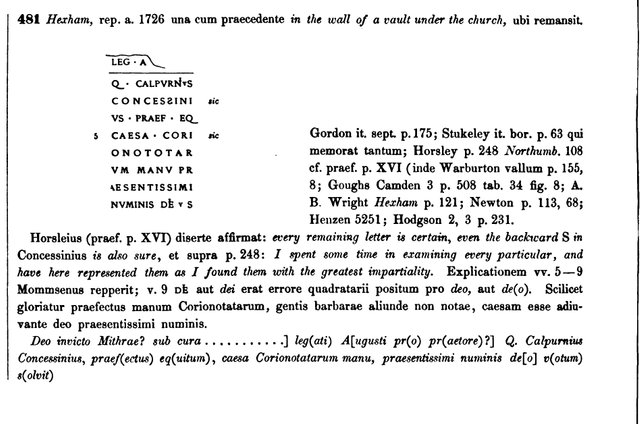
T F O’Rahilly also notes this inscription in Hübner, probably having been alerted to it by Müller:
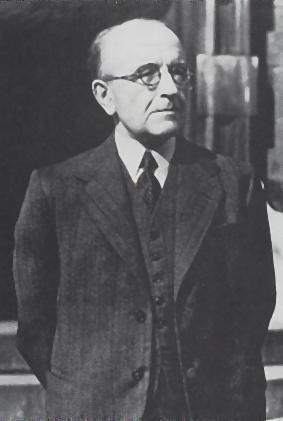
Ptolemy’s CORIONDI, as a South Leinster tribal name, has left no trace in Irish. we may compare Coriono-totae, the name of a people in Britain, known from a Latin inscription at Hexham (in the territory of the Brigantes); this suggests that Coriondi may be a corruption of *Corioni. We may further compare Corin(n)ion, the British name of Cirencester. On the Irish side we have the mythical name Cuirenn, which might go back to *Corion(n)os or *Corin(n)os. Cuirenn was the ancestor of the Cuirennrige [Footnote: An obscure sept, whose location is unknown, unless we compare Inis Cuirennrige, which appears to have been the old name of Inishtrahull, off the coast of North Donegal (see Hermathena xxiii, 206 ff.).] (Cuirenn a quo Cuirennrige, R 139 b 37) and is represented as the brother of Conn Cétchathach (R 143 b 16). We also find an allusion to Dál Cuirend, possibly synonymous with Cuirennrige. But these names, although they may well be related to the name of Ptolemy’s Coriondi, throw no light on the fate which overtook the latter, who disappear from history the moment that they enter it. [Footnote: Pokorny’s argument (ZCP xi, 172) that the Coriondi were Germanic invaders has no basis. When he claims that their name cannot be Celtic because an -nd- suffix is unknown in Celtic, he assumes, inter alia, that the name has been handed down correctly. Also he asserts, very shortsightedly, that Ir. Cuirenn- must go back to Coriondo-, ignoring the many other possible forms which would have given the same result in Irish.] (O’Rahilly 33-34)
A few pages later, O’Rahilly has second thoughts about the Koriondoi leaving no trace in Irish:
Another non-Laginian tribe in Co. Wexford was the Benntraige, who have given their name to the barony of Bantry, lying between the Barrow and the Slaney ... It seems probable that the Benntraige were Érainn ... Perhaps we might regard the Benntraige of Co. Wexford as a remnant of the tribe that Ptolemy calls the Coriondi. (O’Rahilly 38-39)
As usual, the contributors to the website Roman Era Names have speculated on the etymology of this ethnonym:
Κοριονδοι (Coriondoi 2,2,9) has been analysed as derived from PIE *koro- ‘war’, whose descendants include OI cuire ‘troop, muster’, German Heer ‘army’, Greek κοιρανος [koiranos] ‘king, commander’, etc. Alternatively, words for an assembly, such as Greek χωριον [Khōrion] ‘place, town’ and Latin curia ‘court, temple, senate’, may link with the words for burial mounds and ring enclosures ancestral to Welsh crug, English church, and Russian/Turkish курган [kurgan], which Allcroft (1927, 1930) traced back deep into prehistory. (Roman Era Names)
Accommodating the Koriondoi
Goddard Orpen raises a pertinent point about the location of the territory of the Koriondoi:
The Κοριονδοί are placed by Ptolemy above the Brigantes who, as being mentioned both on the south and on the east coast, must, as already stated, be placed in the S.E. corner. But if Manapia was near the site of Wexford [Town], there would be little room for another tribe between the Manapii and the Brigantes. Therefore I should be inclined to place the Coriondi a little more inland, and perhaps we might regard Δοῠνον [Dunon] as representing their chief seat. this name probably represents the Celtic dun, a fort ... It might ... be the famous Dinn Righ on the Barrow below Leighlin Bridge. the form Dunion ... Professor Rhys regards as more Goidelic than Dunon, which would be the Gallo-Brythonic form ... this would point to the possibility of the Coriondi, like their neighbours the Brigantes, being a Brythonic people. (Orpen 125)
Other scholars have similarly argued that the only way of accommodating the Koriondoi on the east coast, between the Brigantes and the Manapioi is to move the Manapioi further north into County Wicklow. This argument has been used to defend the claim that Manapia, the “city” named for the Manapioi, cannot have been in the vicinity of the modern city of Wexford, but must have been much further north. Even Goddard Orpen came to espouse this opinion.
I, however, would still like to identify Manapia with a trading emporium somewhere near the mouth of the River Slaney, so the problem of squeezing the Koriondoi between the Brigantes and the Manapioi is one which I too must face. Perhaps the solution is to take a leaf out of O’Rahilly’s book and identify the Koriondoi as the ancestors of the Benntraige and place them in an area roughly corresponding to the Barony of Bantry. This would leave room for the Brigantes to the south and for the Manapii to the east (with, perhaps, the River Slaney as the boundary between the two tribes). And if the Koriondoi’s territory stretched all the way to the mouth of the Slaney, then they would qualify as a coastal tribe. Problem solved?
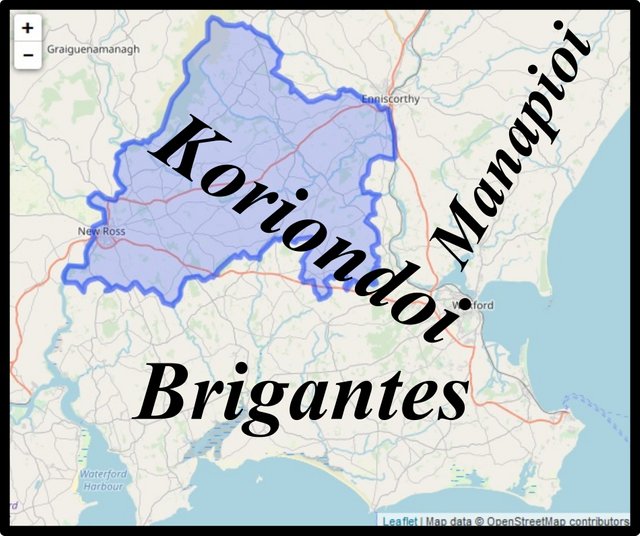
In an earlier article, however, we saw how Goddard Orpen suggested that the name of Ptolemy’s “city” of Manapia may have left a trace in the historical toponym of Carrigmannan. The latter place is on the western side of the Slaney, which would put it in the territory of the Koriondoi rather than that of the Manapioi. This is a minor criticism, however, as there is no certainty that Manapia and Carrigmannan are at all related.
References
- A Hadrian Allcroft, The Circle and the Cross: A Study in Continuity, Volume 1: The Circle (1927), Volume 2: The Cross (1930), Macmillan & Co, London (1927, 1930)
- William Beauford, Letter from Mr. William Beauford, A.B. to the Rev. George Graydon, LL.B. Secretary to the Committee of Antiquities, Royal Irish Academy, The Transactions of the Royal Irish Academy, Volume 3, pp 51-73, Royal Irish Academy, Dublin (1789)
- William Camden, Britannia: Or A Chorographical Description of Great Britain and Ireland, Together with the Adjacent Islands, Second Edition, Volume 2, Edmund Gibson, London (1722)
- Patrick S Dinneen, Foclóir Gaedhilge agus Béarla: An Irish-English Dictionary, Irish Texts Society, M H Gill & Son, Ltd, Dublin (1904)
- Ernst Willibald Emil Hübner (Editor), Inscriptiones Britanniae Latinae, PDF, p 98, Number 481, Williams & Norgate, London (1873)
- Karl Wilhelm Ludwig Müller (editor & translator), Klaudiou Ptolemaiou Geographike Hyphegesis (Claudii Ptolemæi Geographia), Volume 1, Alfredo Firmin Didot, Paris (1883)
- Karl Friedrich August Nobbe, Claudii Ptolemaei Geographia, Volume 1, Karl Tauchnitz, Leipzig (1845)
- Karl Friedrich August Nobbe, Claudii Ptolemaei Geographia, Volume 2, Karl Tauchnitz, Leipzig (1845)
- Thomas F O’Rahilly, Notes on Irish Place-Names, Hermathena, Volume 23, Number 48, pp 196-220, Trinity College, Dublin (1933)
- Thomas F O’Rahilly, Early Irish History and Mythology, Dublin Institute for Advanced Studies, Dublin (1946, 1984)
- Goddard H Orpen, Ptolemy’s Map of Ireland, The Journal of the Royal Society of Antiquaries of Ireland, Volume 4 (Fifth Series), Volume 24 (Consecutive Series), pp 115-128, Dublin (1894)
- Julius Pokorny, Spuren von Germanen im alten Irland vor der Wikingerzeit, in Kuno Meyer (Editor), Zeitschrift für Celtische Philologie, Band XI, pp 169-188, Max Niemeyer, Halle (1917)
- Claudius Ptolemaeus, Geography, Biblioteca Apostolica Vaticana, Vat Gr 191, fol 127-172 (Ireland: 138v–139r)
- James Ware, Walter Harris (editor), The Whole Works of Sir James Ware, Volume 2, Walter Harris, Dublin (1745)
- Friedrich Wilhelm Wilberg, Claudii Ptolemaei Geographiae, Libri Octo: Graece et Latine ad Codicum Manu Scriptorum Fidem Edidit Frid. Guil. Wilberg, Essendiae Sumptibus et Typis G.D. Baedeker, Essen (1838)
Image Credits
- Ptolemy’s Map of Ireland: Wikimedia Commons, Nicholaus Germanus (cartographer), Public Domain
- Greek Letters: Wikimedia Commons, Future Perfect at Sunrise (artist), Public Domain
- Vaticanus Graecus 191, Folio 139r (Detail): © Vatican Library, Biblioteca Apostolica Vaticana, Vat Gr 191, Folium 139r, Fair Use
- T F O’Rahilly: Copyright Unknown, Fair Use
- Barony of Bantry and the Koriondoi: Map Data © OpenStreetMap, Open Data Commons Open Database License

Excellent history and very nice article.
Thank you For sharing with us...
Downvoting a post can decrease pending rewards and make it less visible. Common reasons:
Submit
Wooaw.... Amazing history class you have given me this evening over my end. I wouldn't have known this lot if it wasn't for your blog. Am really blissed to meet it today.
And writing in two languages made it more understanding. I enjoyed every second spent here. Great work and keep educating us on the blockchain always
Posted using Partiko Android
Downvoting a post can decrease pending rewards and make it less visible. Common reasons:
Submit
Hi harlotscurse,
Visit curiesteem.com or join the Curie Discord community to learn more.
Downvoting a post can decrease pending rewards and make it less visible. Common reasons:
Submit
wow! what a beautiful history. really awesome. i like your post. thanks for share this post...
Downvoting a post can decrease pending rewards and make it less visible. Common reasons:
Submit
Fascinating study. If only we had more extant records of times past. So much was lost in centuries of lootings and destruction.
On the bright side, I guess those holes in the puzzle of human civilization has allowed generations of scholars to develop their areas of expertise. I wonder what they'd be doing if we had all the answers to all our questions.
Ireland will remain enigmatic in so many ways.
Downvoting a post can decrease pending rewards and make it less visible. Common reasons:
Submit
#very good journal writing buddy.wish u all the best....
Downvoting a post can decrease pending rewards and make it less visible. Common reasons:
Submit
Resteemed
Downvoting a post can decrease pending rewards and make it less visible. Common reasons:
Submit